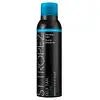What's inside
What's inside
 Key Ingredients
Key Ingredients

 Benefits
Benefits

 Concerns
Concerns

 Ingredients Side-by-side
Ingredients Side-by-side

Dimethyl Ether
SolventWater
Skin ConditioningAlcohol Denat.
AntimicrobialDihydroxyacetone
Skin ConditioningPEG-40 Hydrogenated Castor Oil
EmulsifyingGlycerin
HumectantEthoxydiglycol
HumectantPropylene Glycol
HumectantPhenoxyethanol
PreservativeHydrolyzed Jojoba Esters
Skin ConditioningTocopherol
AntioxidantLinalool
PerfumingHexyl Cinnamal
PerfumingBenzyl Salicylate
PerfumingCaprylyl Glycol
EmollientDecylene Glycol
Skin ConditioningButylphenyl Methylpropional
PerfumingCitronellol
PerfumingLimonene
PerfumingAlpha-Isomethyl Ionone
PerfumingGeraniol
PerfumingCoumarin
PerfumingCI 14700
Cosmetic ColorantCI 19140
Cosmetic ColorantCI 42090
Cosmetic ColorantDimethyl Ether, Water, Alcohol Denat., Dihydroxyacetone, PEG-40 Hydrogenated Castor Oil, Glycerin, Ethoxydiglycol, Propylene Glycol, Phenoxyethanol, Hydrolyzed Jojoba Esters, Tocopherol, Linalool, Hexyl Cinnamal, Benzyl Salicylate, Caprylyl Glycol, Decylene Glycol, Butylphenyl Methylpropional, Citronellol, Limonene, Alpha-Isomethyl Ionone, Geraniol, Coumarin, CI 14700, CI 19140, CI 42090
Ingredients Explained
These ingredients are found in both products.
Ingredients higher up in an ingredient list are typically present in a larger amount.
Dihydroxyacetone, or DHA, is a simple sugar. It is frequently used in self-tanning products.
DHA binds to the amino acids in your dead skin cells to create a brown/orange color. Darkening begins to kick in a few hours after application and will continue to develop for up to 3 days. This ingredient can be drying.
Both the US and the EU have approved DHA in self-tanning products. In the EU, DHA is allowed at a maximum concentration of 10%. Most tanning products usually contain amounts between 3-5%.
If you are pregnant or have underlying medical conditions, it is best to speak with a dermatologist about using self-tanning products.
Learn more about DihydroxyacetoneGlycerin is already naturally found in your skin. It helps moisturize and protect your skin.
A study from 2016 found glycerin to be more effective as a humectant than AHAs and hyaluronic acid.
As a humectant, it helps the skin stay hydrated by pulling moisture to your skin. The low molecular weight of glycerin allows it to pull moisture into the deeper layers of your skin.
Hydrated skin improves your skin barrier; Your skin barrier helps protect against irritants and bacteria.
Glycerin has also been found to have antimicrobial and antiviral properties. Due to these properties, glycerin is often used in wound and burn treatments.
In cosmetics, glycerin is usually derived from plants such as soybean or palm. However, it can also be sourced from animals, such as tallow or animal fat.
This ingredient is organic, colorless, odorless, and non-toxic.
Glycerin is the name for this ingredient in American English. British English uses Glycerol/Glycerine.
Learn more about GlycerinPropylene Glycol is an odorless, colorless liquid. As a humectant, it helps skin retain moisture. It also aids in delivering active ingredients.
Another role of this ingredient is preventing a product from melting or freezing. Propylene glycol also adds antimicrobrial properties to a product, elongating product lifespan.
This ingredient is considered an organic alcohol and commonly added into both cosmetics and foods.
Those with sensitive skin or conditions may develop a rash when using this ingredient.
Learn more about Propylene GlycolWater. It's the most common cosmetic ingredient of all. You'll usually see it at the top of ingredient lists, meaning that it makes up the largest part of the product.
So why is it so popular? Water most often acts as a solvent - this means that it helps dissolve other ingredients into the formulation.
You'll also recognize water as that liquid we all need to stay alive. If you see this, drink a glass of water. Stay hydrated!
Learn more about Water